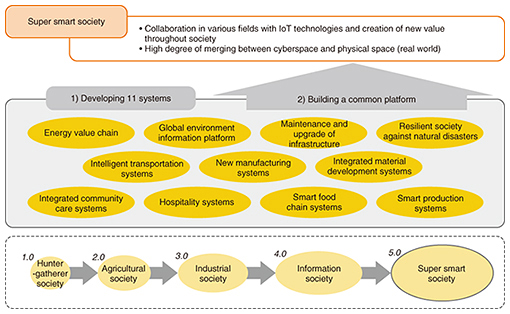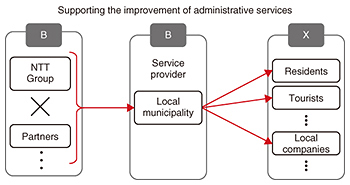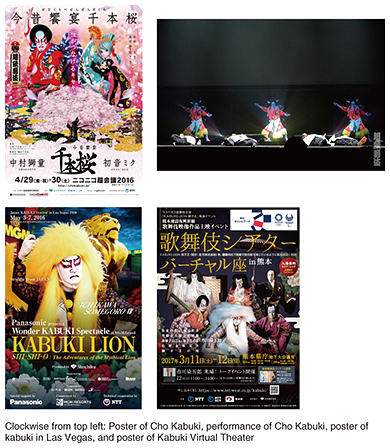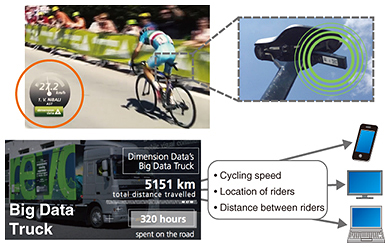 |
|||||
|
|
|||||
|
Feature Articles: Keynote Speeches at NTT R&D Forum 2017 Vol. 15, No. 4, pp. 1–8, Apr. 2017. https://doi.org/10.53829/ntr201704fa1  Generating New Value with xICT
|
|||||
| * | Wi-Fi is a registered trademark of Wi-Fi Alliance. |
5. Further promotion of B2B2X model
I will now describe some important points for promoting the B2B2X model even further. Most important of all is coming up with a clear definition of ‘X’ in B2B2X, that is, the service end users. Doing so should bring into view a system of collaboration between NTT and service providers and partners as well as best business models, customer touch points, etc.
Let me give some examples of this approach in the field of self-driving cars. What kind of interfaces would be needed to enable the elderly and people with mobility problems or disabilities to use self-driving cars? No doubt, voice input and other types of interfaces would be needed. Moreover, in the case of voice input, some type of technology would be needed to ensure that the person’s voice was clearly understood in a noisy environment, and in Japan, there would also be a need for technology that could identify different dialects. Here, instead of preparing special interfaces for each and every car, a better approach would be to develop cars that could support the circumstances of individual users from the cloud based on common specifications.
However, a self-driving car equipped with such interfaces and various types of safety equipment is apt to be expensive. Plus, considering the frequency of usage, the business model itself would not likely be a self-ownership type but rather a shared type. What kind of players would then be best for providing such a service based on a shared type of business model? I believe that local municipalities might make a positive contribution in this regard, and that local taxi companies and public transportation systems might team up as second B players.
Here, it would not do for automobile manufacturers or NTT to play the role of service provider. I think that supporting the provision of a new business model or service as the first ‘B’ in B2B2X would be more effective for speeding up the development of self-driving technology.
In this way, instead of a product-out approach based only on technology, I believe, as I stated above, that finding a clear definition of ‘X’ in B2B2X, or in other words, defining what are new values or new sensations, will lead to new partners and new business models.
6. Japan revitalization by Society 5.0
The Cabinet Office of the Government of Japan is promoting the creation of a “super smart society” (Society 5.0) under the theme “New Initiatives toward Japanese Industry of the Future and Social Transformation” as The 5th Science and Technology Basic Plan (Fig. 6).

Fig. 6. Society 5.0 (The 5th Science and Technology Basic Plan).
The keyword “Society 5.0” signifies how society has become progressively smarter through its transformation from a hunter-gatherer society to an agricultural society, industrial society, and information society, and the coming super smart society. As a broad theme that includes Industry 4.0 (Fourth Industrial Revolution), I acknowledge that Society 5.0 is precisely the next big concept that Japan should adopt in future policy making.
In response to this Cabinet Office policy, the Japan Business Federation (Keidanren) has begun its implementation by drafting an action plan based on key subthemes underlying Society 5.0 [1].
Specifically, a future society as envisioned by Keidanren can be broken down into five subthemes: a smart society undaunted by the decrease in population; a society in which every individual, including elderly people and women, can actively participate; a safe and secure society in both cyber and physical spaces; a society that connects cities and outlying regions, making for a comfortable and pleasant life anywhere; and an environmentally and economically sustainable society. In addition, cities, regions, objects/things/services, infrastructure, and cyberspace have been designated as specific study areas.
In this way, the government and Keidanren, that is, the public and private sectors, are promoting Society 5.0 with the aim of building the society of the future. Here, AI, big data, and IoT will play important roles in making Society 5.0 a reality. IoT will enable a wide variety of real-world data to be stored as big data, and AI will enable that data to be analyzed, so we can expect a wide range of social and global issues to be solved in this way. However, such social issues cannot be solved if companies and local municipalities keep their data to themselves. It is essential that all data in society be shared across industries and fields.
7. Concerns in data usage
A key issue in the use of data throughout society is the handling of personal data. Who does personal data belong to? Do you, the individual, own it? Or does it belong to the companies that gather the data?
The EU approved the right to data portability in April 2016. In Europe, legislation is moving forward to enable individuals to retrieve their personal data—for example, a purchasing history gathered by Google or Apple—and to transfer that data to other business operators if so desired. In Japan as well, the handling of personal data is a very sensitive issue, and I think there is a need here to proceed carefully.
Rather than obsessing about the ownership of personal data, I have proposed to various parties the concept of treating various types of data as belonging to society and citizens.
With an eye to appropriate handling of such sensitive information, the NTT laboratories have been developing secret-sharing and secure multi-party computation technology. This technology securely stores personal data through encryption and distributed storage, and at the time of data analysis, enables only the results of analysis to be obtained without data analysts having to touch the raw data. We are using this technology in initiatives that aim to advance the use of big data throughout Japan.
There are also other issues in addition to the handling of personal data that must be resolved to achieve data sharing and data usage throughout society. First, there is a need for widespread gathering of good-quality data. I believe that the biggest risk in the AI and big data society of today is that smart AI will routinely process malicious or intentionally erroneous data. For example, traffic signals may behave in an abnormal manner on the basis of erroneous data, and control equipment in a power plant may automatically stop if it detects something it considers to be dangerous. The widespread gathering of good-quality data will require security technology that can remove such erroneous data. It will also be necessary to ensure fair usage in data gathering. What exactly is “fair usage?” As I explained earlier, data gathering to improve community services and solve social problems is a fair objective. Of course, there is a need for encryption to protect personal data and a check system to prevent abuse. I also think that the standardization of data formats and ciphers is necessary.
8. Data sharing with local municipality as hub
I believe that one method of resolving these data sharing and usage issues is to promote the gathering and use of big data with local municipalities serving as hubs. Considering the need for combining and handling a wide variety of data to solve social issues, I think there would be a problem allowing a single company to gather and use such information.
In particular, I believe that opening up the data held by a local municipality, such as demographics, maps, disaster prevention measures, and sightseeing information, and providing the big data held by companies to industry as public property can expand possibilities in the integrated use of all kinds of data and revitalize local business.
The concept of a local municipality serving as a service provider to improve community services is shown in Fig. 7.

Fig. 7. Data sharing with local municipality as hub.
The NTT Group, working with partners such as Panasonic Corporation and Hitachi, Ltd., would like to provide local municipalities with support tools. We would like to see local municipalities take on a leadership role in data sharing and data usage within their communities with the aim of improving community services and expanding local business, as I just mentioned. Although we are talking about local municipalities here, we know that undertaking this initiative simultaneously throughout the country would be quite difficult from an operations point of view. We have so far concluded agreements with Sapporo City and Fukuoka City to get this initiative started.
I would like to see this initiative with local municipalities evolve so that they shift to the first ‘B’ in B2B2X while local industries and companies act as the second ‘B.’ In this way, I would like local municipalities, NTT, and other players to become partners in supporting local industries and contributing to the expansion of local economies. I see this type of activity as another major theme in Japan that can lead to regional revitalization.
9. Technologies underlying B2B2X model
Finally, examples of technologies that NTT laboratories and NTT Group companies are providing to service providers and other players making up the second ‘B’ in B2B2X are shown in Fig. 8.

Fig. 8. Technologies underlying B2B2X model.
Going forward, the NTT Group will continue to pursue collaboration with diverse partners to generate new value and new sensations, help grow the Japanese economy, and help find solutions to a wide variety of social issues.
Reference
| [1] | Keidanren, “Toward Realization of the New Economy and Society - Reform of the Economy and Society by the Deepening of ‘Society 5.0’-,” 2016.
https://www.keidanren.or.jp/en/policy/2016/029_outline.pdf |
|---|













